Fj1100 Top Speed
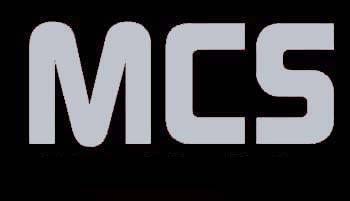
Yamaha F J1100
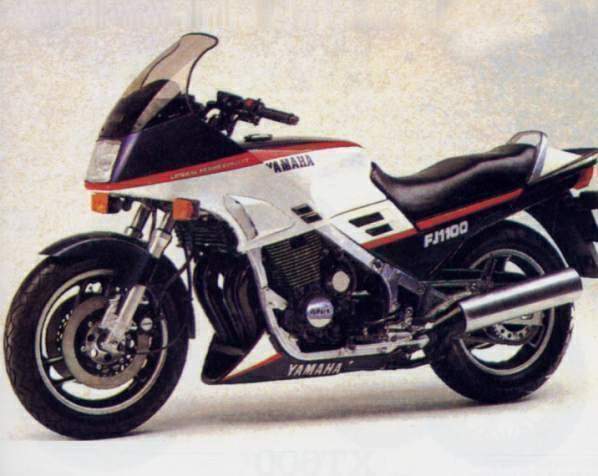
| Make Model | Yamaha FJ 1100 |
| Year | 1985 |
| Engine | Four stroke, transverse four cylinder, DOHC, 4 valves per cylinder |
| Capacity | 1097 cc / 66.9 cu-in |
| Bore x Stroke | 74 x 63.8 mm |
| Cooling System | Air/oil cooled |
| Compression Ratio | 9.5:1 |
| Lubrication | Wet sump |
| Oil Capacity | 4.2 Ltres |
| Induction | 4x Mikuni BS36 carbs. |
| Ignition | T.C.I |
| Spark Plug | NGK, DPR8EA-9 |
| Starting | Electric |
| Max Power | 125 hp / 91.1 kW @ 9000 rpm |
| Max Torque | 86 Nm / 64.2 lb-ft @ 8000 rpm |
| Clutch | Wet, multiple discs, hydraulic operated |
| Transmission | 5 Speed |
| Final Drive | Chain 2.470 (42/17) |
| Primary Red. System & Ratio | Spur Gear / 1.750 (98/56) |
| Gear Ratio | 1st 2.857 (40/14) 2nd 2.000 (36/18) 3rd 1.571 (33/21) 4th 1.291 (31/24) 5th 1.115 (29/26) |
| Frame | Steel, Double cradle frame |
| Front Suspension | 41mm Stanchion tube, 3-way position adjustable preload damping,3-way adjustable spring preload. Hydraulic anti-dive |
| Front Wheel Travel | 126 mm / 4.9 in |
| Rear Suspension | Single shock 17-way adjustable rebound damping 12-way spring preload |
| Rear Wheel Travel | 120 mm / 4.7 in |
| Front Brakes | 2x 282mm discs 2 piston calipers |
| Rear Brakes | Single 282mm disc 2 piston caliper |
| Front Tyre | 120/80 V16 |
| Rear Tyre | 150/80 V16 |
| Dimensions | Length 2175 mm / 85.6 in Width 730 mm / 28.7 in Height 1200 mm / 47.2 in |
| Wheelbase | 1490 mm / 58.7 in |
| Seat Height | 780 mm / 30.7 in |
| Ground Clearance | 140 mm / 5.5 in |
| Dry Weight | 227 kg / 500.4 lbs |
| Wet Weight | 252 kg / 555.5 lbs |
| Fuel Capacity | 24.5 Litres / 6.3 gal |
| Consumption Average | 34 mpg 14km/lit |
| Braking 60 - 0 / 100 - 0 | - / 36.9 m |
| Standing � Mile | 10.7 sec / 125.3 mph 200 km/h |
| Top Speed | 146 mph / 235 km/h |
| Road Test Bike 1984 Group Test Cycle World Motosprint Group Test 1985 Rider Group Test | |
The FJ1100 was the first litre-plus motorcycle to address the problem of all litre-plus motorcycles - how to make something fundamentally big and heavy handle responsively. The FJ is a genuine 150mph superbike, combining a huge and immensely strong engine with a low and fairly lightweight chassis. Until the FJ1200, it was Yamaha's flagship, their biggest and most powerful four-stroke motorcycle.
The motor is a compact, slightly inclined, DOHC, 16 valve transverse four, remarkable only for the amount of sheer, outright power it gives - 125bhp at 9,000rpm -which makes the FJ a king of wheelspin along its rapid path to a blistering top speed. What is unusual about the bike is the way the engine is mounted. Yamaha realized that serious weight-saving on a bike this big was a futile exercise, so they concentrated their efforts on keeping the weight, and indeed the bike, low and compact. Their 'lateral frame concept' consists of a high-tensile, box-section steel frame built along endurance racer lines. There are no top tubes running above the engine. Instead, two huge frame tubes laterally hug the motor's sides. Instead of meeting at the steering head, these two side tubes join in front of it; the steering pivot itself is supported by small-diameter tubing, fully triangulated off these main rails. The aim is to achieve the greatest possible steering head rigidity. Certainly it was a first for a Japanese production bike.
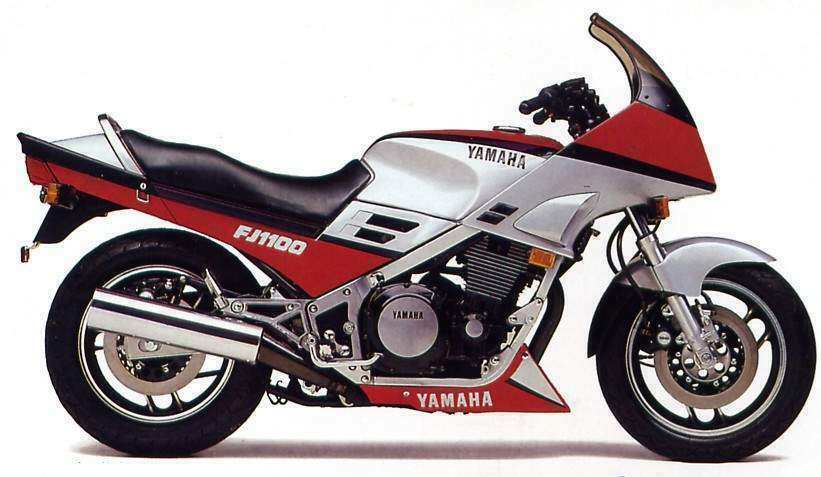
Sitting on 16in wheels, front and back, the FJ1100 feels remarkably low on the road. The seat height is a mere 30.7in yet there is good Ground Clearance. With a full tank it weighs 5561b yet the weight is hardly noticeable on the move. The bike's low and tight dimensions belie its size and it has none of the dead, top heavy feel of traditional 1100cc monster road bikes. It steers quickly and nimbly as intended. On small wheels with fat tyres, 4.4in of trail, a 30 degree head angle and a trim 58.3in wheelbase, the FJ was the first 1100 to prove as lively as many a middleweight motorcycle.
It makes smooth and strong power effortlessly.
The wind-tunnel designed full fairing deflects the worst of the wind and the weather and helps the bike to an impressive top speed. It is so quick and powerful that it can easily deceive the rider about what speed he or she is doing.
Early in 1986, Yamaha unveiled the FJ1200, an oversized big bore version with more power everywhere especially in the midrange. It is only a few mph faster at the top end. The chassis spec is virtually identical and only detail changes have been made.
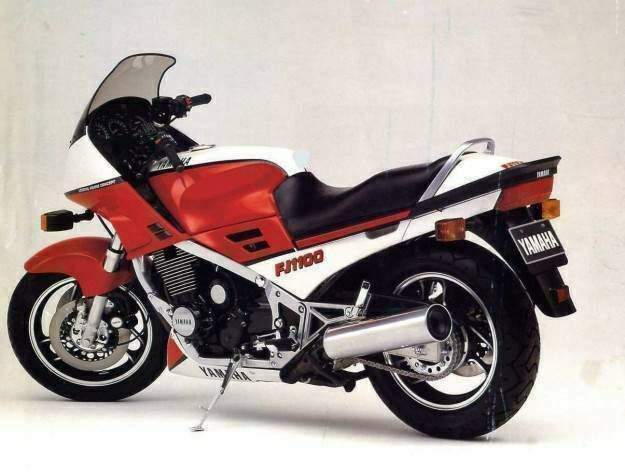
Cycle World review 1984
Yamaha fans have been waiting. And waiting. And hoping. Hoping that someday, their favorite motorcycle company would give them the machine that was long overdue, the one they had been asking for and dreaming about for years: a liter-class sportbike. But not just any sportbike; they were hoping for an all-out performance weapon, a take-no-prisoners street racer that would reflect Yamaha's success in two-wheel competition over the past 20 years.
That someday is finally here. And so is the motorcycle. It's the FJ1100, a bike designed to go head-to-head with the very best, very fastest machines the competition has to offer�Kawasaki's Ninja, Honda's 1000 Interceptor and Suzuki's GS1150. But this new Yamaha isn't designed just to compete against those other bikes; it's configured to win.
If you're skeptical, hear this: On a flat, deserted stretch of highway in the Mo-jave Desert, we saw the speedo needle on our FJ11 nudge right to the 160-mph mark. And on another, shorter stretch of deserted pavement�Carlsbad Raceway's quarter-mile dragstrip�the big Yamaha recorded a run of 10.87 seconds at 125.00 mph, the quickest time ever posted by a Cycle World test motorcycle.
You can believe those quarter-mile numbers, because another FJ1100 Yamaha�one with the world's best stock-bike dragracer, Jay Gleason, at the controls�turned a 10.43 at Fremont Raceway, a track that offers much better traction than does Carlsbad.
That time was the fastest ever recorded by Gleason on a stock motorcycle, and he's tried them all. The 160-mph speedometer reading was a lie, though. The bike's speedometer is highly optimistic, especially at those kinds of speeds, and it's unlikely that the FJ was actually going much faster than, oh, about 145 or 146 mph that day.
No matter how those figures are interpreted, they tell you that the FJ1100 is one outstanding performer. In fact, this year, the FJ offers as much performance as there is to be had amongst production machines. There are other bikes that have as much engine, but they all are heavier. There are others as light, but they all have less power. Any way you add up the numbers, the Yamaha FJ1100 is 1984's king of performance.

What's most amazing about that exceptional performance, though, is that Yamaha didn't use any leading-edge technology or resort to any engineering extremes to accomplish it. The FJ1100's
engine is completely conventional throughout, from its air-cooled, transverse inline-Four configuration to its relatively mild state of tune. It can't match the 1000 Interceptor for sheer valve area (which determines maximum air flow and thus is critical to peak power output) or for having the highest redline (10,500 rpm on both the 1000 Interceptor and the Ninja), it is no match for the GS1150 Suzuki in terms of displacement, and the FJ's state of tune is milquetoast-mild compared with that of the hot-rodded Kawasaki Ninja. Instead, Yamaha's approach with the FJ1100 was Moderation in All Things.
Really, the only thing outstanding or even remotely unconventional about the engine is its performance. Its design is patterned after that of the smaller Yamaha inline Fours, using air cooling and a one-piece crank that turns in plain bearings. Despite being a transverse Four, the engine is unusually narrow in width, mostly because the 364-watt alternator, which has a built-in voltage regulator and rectifier, is located behind the cylinders and is chain-driven. All that mounts to the crankshaft are the solid-state ignition system's small rotor and magnetic pickups on the left end. And even the ignition doesn't add much to engine width because it uses only an electronically controlled advance that is regulated by rpm and intake vacuum.
Also contributing to engine compactness is the straight-cut primary drive gear, which is cut into the No. 3 cylinder's right-side crankshaft flywheel (like on certain Suzuki Fours) rather than being a separate gear. What's more, by making the stroke relatively short (63.8mm) so the flywheels didn't have to be large in diameter, Yamaha was able to keep the crankshaft and the transmission mainshaft quite close together, just like on the much-smaller XJ650 engine. And because the 74mm bore size is not extravagantly oversquare relative to the stroke, the engine didn't have to be very wide to begin with.
That's good engineering, but nothing new. Neither is the 16-valve, dohc top end in any way revolutionary. An inverted-tooth (Hy-Vo type) chain drives a pair of hollow camshafts that have 7.7mm of lift and 276 degrees of duration. Valve sizes are 29mm on the intakes and 25mm on the exhausts. The cams push on shim-and-bucket cam followers of the same type used on the Venture V-Four, although the FJllOO uses smaller shims than other Yamahas do. The reduced shim-weight lightens the valve train so that higher sustained engine rpm can be used without encountering harmful valve float.
Lightweight valve trains are commonplace these days, but the FJllOO does buck a current trend in its combustion-chamber design. Most high-performance motorcycle engines now have flat, compact combustion chambers through the use of narrow included valve angles, usually never higher than about 40 degrees.

The FJ1100, however, has a valve angle of 64 degrees, for several reasons. For one, Yamaha's four-stroke technology includes numerous ways to make high levels of power with relatively wide valve angles; and because just about all Yamaha four-strokes use this same valve angle, the factory's manufacturing equipment is able to machine the heads much more quickly and economically. Anyway, when an engine works as wonderfully as the FJ1100's does, you don't quibble about trends.
Actually, the only "tricks" in the FJ's engine are the large holes, each about an inch in diameter, in the full webs that support the main bearings. Every engine designer knows that the pistons must move the air in the crankcase as they pump up and down, but Yamaha's engineers determined that the pumping action can rob an engine of more power than you might imagine. So they put those large holes in the main bearing webs so the air could move more easily between adjoining cylinders. According to Yamaha, at least, those holes resulted in a five-horsepower gain. Overall, the FJ1100 is claimed to put out 125 horsepower at 9000 rpm, with a torque peak of 75.9 lb.-ft. at 8000 rpm.
Controlling that power is a conventional, multi-plate wet clutch that is hy-draulically actuated and tensioned by a large-diameter diaphragm spring. The five-speed transmission has been kept compact by the elimination of bushings between the individual gears and their respective shafts. A special heat-treatment of the gears enables them to run directly on the two transmission shafts. Final drive is via a No. 530 O-ring chain.
For all its simplicity and size, though, this big inline-Four is remarkably smooth, though it has a couple of rpm ranges in which the vibration is stronger and more noticeable than in others. The engine starts willingly�either hot or cold�and warms quickly. There's never any hesitation in the throttle response once the engine reaches full operating temperature.
Unlike many liter-size performance bikes, the FJ1100 has an engine that is easy to use at low rpm. Some big-engined bikes tend to make arm-wrenching power from idle to redline, requiring the rider to use caution when tooling around town or through traffic. But not the FJ; at lower rpm it feels more like a friendly 750 than an angry 1100, so you don't have to be so careful how far you dial open the throttle when just riding casually. The engine works with you, not against you.
Hold the throttle open for an instant longer, though, and all hell breaks loose. There's a smooth rush of acceleration in every gear, a rush that seems to get stronger and stronger as speed builds. By the time you're moving at triple-digit speeds, the FJ seems just to be hitting its stride. It still accelerates hard enough at those speeds to keep your arms pulled straight, and it doesn't let up until the tach needle starts sneaking up on redline.
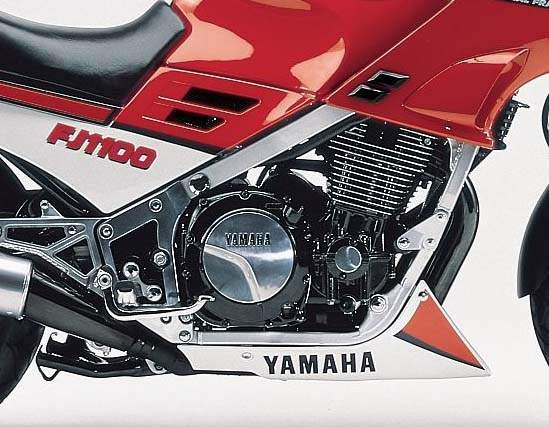
It's ridiculously easy to get rid of all that speed, too, for the brakes are as
trustworthy, brave and loyal as the world's best Boy Scout. That's one of the reasons why the bike can motor along at 100 mph and feel relaxed, or cruise at 120 mph and still not feel wrung-out. Even at top speed, the Yamaha behaves as though it could run that fast forever.
Nevertheless, as nice as the FJ1100's engine might be, what makes this bike special is the chassis more than anything else. The foundation is a box-section steel-tube frame in which there is no backbone. Instead, wide-based side rails, one on each side, wrap out around the engine's cylinder head as they run between the steering head and the swingarm pivot.
But instead of joining directly to the steering head, the side rails make a complete loop out around the entire front fork, and are connected to the steering head through a triangulated series of smaller tubes. What this design does is give the steering head tremendous lateral support to minimize flex under severe cornering loads; it also provides a firm, integral platform on which to mount the half-fairing�a consideration that was figured into the FJ's design right from Day One�rather than attaching it with added-on bracketry.
Bolted onto the main frame is the rear subframe, which supports the seat and the rear fender. The engine is removed by unbolting the lower frame tubes, which have wedge-shaped mating surfaces welded into their ends where they're spliced together to insure a positive connection.
The engine mounts are a combination of solid and rubber; the lower rear mount is solid, the upper rear mount is rubber, and the front mounts are one of each�solid on the left side and rubber on the right. The solid mounts help locate the engine securely, while the rubber mounts help isolate vibration from the rider.
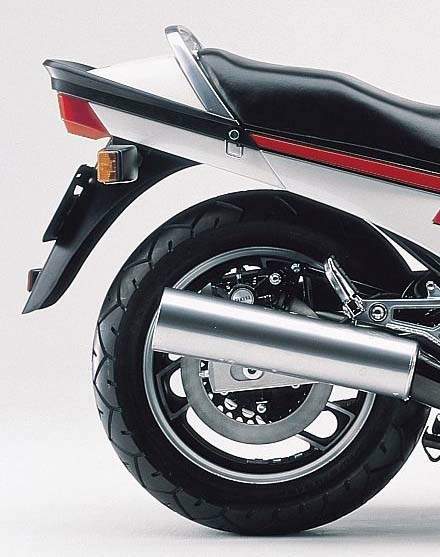
The FJll's frame also is designed to keep everything on the machine as close to the ground as possible. Thus the FJ is an uncommonly low-slung motorcycle. Climb off of a Honda 1000 Interceptor or a Suzuki GS1150, in particular, and onto an FJ1100 and the Yamaha feels half a foot lower, although it's only an inch or so lower at the crankshaft.
Some of that lowness is due to the Yamaha's 16-inch wheels. Lately, just about everyone has been going to 16-inch front tires to reduce front-wheel inertia and to reduce pneumatic trail, making for less steering effort. But the FJ1100 also has a 16-inch rear, a giant 150/80V-16 meat that is the widest rear tire put on any production bike. It measures 6.5 inches across the tread, meaning that it's wider than many car tires.
Tire width and profile are responsible for much of the Yamaha's superb handling characteristics. Oh, in slow corners, say below 35 mph, there's some noticeable positive roll-steer, meaning that the bars want to turn into the corner; and that condition is exaggerated when the throttle is snapped closed or the brakes applied. But at any speed above that, the FJ's steering is easy, quick and neutral. And the bike is stable and confidence-inspiring in the process, no matter if the corner is bumpy, smooth or a combination of both.
The JF1100 also responds more noticeably than do most other sportbikes to hanging-off in the turns. A rider can feel the difference between hanging off and sitting up straight when going around a corner. Either way, it's easy to make the Yamaha lean way over, and the bike has a tremendous amount of cornering clearance, although it takes considerably more effort to achieve the last few degrees of lean than it does to reach less-radical angles.
The FJ's lowness also makes the bike unusually easy to ride around town. The machine is big, having a wheelbase of 58.8 inches and weighing 549 pounds (with its 6.5-gallon gas tank half-full), but it feels small and light at low speeds.
As a result, many small or short riders will find the FJ1100 to be the least-intimidating big-bike they've ever ridden. Even at high speeds, the Yamaha seldom, if ever, reminds you that it's actually more than a quarter-ton of high-powered mass.
Obviously, the FJ's suspension plays a key role in the bike's excellent handling. The spring rates are a little on the light side�about perfect for a 160-pound solo rider but a little too soft for a 200-pounder or for two-up work. There are adjustments, of course, including integrated spring-preload and rebound-damping adjusters that allow one tool to adjust both simultaneously, or two tools to adjust each independently. The fork offers three preload positions (allowing about an inch of adjustment) and three rebound positions (the second setting gives 26 percent more damping than the first, the third provides 20 percent more than the second).
A 14mm wrench is needed to twist the rear suspension's combined spring-preload/rebound-damping adjusters behind the right sidecover. The adjusters are remote from the spring and damper, with cables linking the damping control to the gas-pressurized deCarbon shock, and a small chain connecting the preload adjuster to the threaded spring tensioner.
In addition to the other adjustments, there's a four-way-adjustable anti-dive device built onto each fork slider. Nevertheless, the Yamaha's front end still nosedives when the powerful front brakes are used. And turning the adjusters doesn't seem to make much difference. But to be fair, we should point out that the fork is wonderfully compliant, and it's possible that without the anti-dive, more compression damping might have been needed to keep the bike under control during hard stops.
At least the anti-dive doesn't have any adverse effects on the brakes. The anti-dive employs the usual compression-damping retriction that is activated by brake-line pressure, but on the Yamaha the brakes are not made spongy due to the presence of the system. The new-style opposed-piston calipers used on all three discs are strong and don't flex noticeably, as well as doing a super job of slowing the bike.
The FJ also has the composite discs that Yamaha first introduced last year. A lightweight center support carries a seven-piece, oven-brazed, sandwiched disc assembly. The result is a lightweight, radially ventilated disc that is claimed not to warp, to perform better in the wet, and that helps the brakes work just as brakes are supposed to work: powerfully but predictably.
That's comforting to know, especially if you're the resident speed-merchant in your neighborhood. And extremely high speeds are made even easier yet to deal with by the ergonomics.
The riding position is a natural crouch, with the legs tucked back and the arms straight. That pose won't turn anyone into a hunchback, but it's excellent for high-speed work. Then there's the very effective fairing. It's not large and it doesn't keep all the wind off the rider, but it diverts enough air so you can duck behind it and feel good while going two miles a minute. That's undoubtedly one of the reasons why the bike still feels comfortable after four or five hundred miles of riding. It's a good thing, too, because the cast, two-piece handlebars are non-adjustable. So if you aren't comfortable on this bike the way it comes, you're out of luck. But for most riders, especially those of a sporting bent, the comfort level is acceptable.
The FJ1100's fairing does more than just protect the rider, though. It contains small, plastic scoops that duct cooling air to the top of the cylinder head. These scoops are critical to engine cooling on the Yamaha. The ducts can also be removed for access to the spark plugs, though the push-pin-type plastic fasteners are easily broken if the rider doesn't first read the owner's manual to learn how to use them.
The instruments are also housed in the fairing, which helps reduce the amount of mass attached to the front fork. The gauges consist of a 165-mph speedometer, a 12,000-rpm tachometer and a fuel gauge that's not accurate at all. Also, the oil-level warning light on our test bike often insisted on lighting up when the bike was accelerated briskly, even though the oil level was not low. The gauges are simple enough and easy to read, but for a bike of this caliber they're also uninspiring in design and aggravating in operation.
Ah, but no one will ever accuse the rest of the FJ1100 of being uninspired. It's bright, racy, exciting and, best of all, purposeful. In a field populated with high-zoot machinery like the Interceptor, the Ninja and the GS1150, the FJ1100 manages to stand out and to look good, all at the same time.
That's not an easy thing to do. Especially for Yamaha, a company that hasn't had the greatest track-record in the design of exciting, tastefully eyecatching machinery.
Whoever learned that lesson learned it well. The FJ1100 has a powerful message, and it rings out that message loud and clear. This is a motorcycle that looks like it could be the fastest, most competent all-around liter-class sportbike of them all. Which is no hollow threat, either. Because that's exactly what the FJ1100 is: the best.
FJ1100 EVOLUTION: CONSERVATIVE BY DESIGN 11 V
FJ1 100 merely as Yamaha's quick-and-dirty attempt to catch up with the competition in the literbike sport class. After all, its engine is "only" an air-cooled inline Four, a type considered passe by many riders in these times of liquid cooling and V-motors. And other aspects of the FJ, specifically its included valve angle (quite wide by current standards) and shortage of high-tech features, suggest that perhaps Yamaha isn't capable of playing high-performance hardball in the liter-class league.
If you came to such a conclusion, you'd be wrong. As wrong as knobbies on a dragbike.
Truth is, the FJ1100's development has not been a quick process at all. The concept first saw the light of day on a drawing board way back in 1980, and it has undergone countless revisions, refinements and restylings between those original sketches and what you can buy today.
Neither was the FJ 1 l's engine configuration chosen because it would be economical to manufacture, expeditious to get into production or because Yamaha lacked the technological prowess to build anything more innovative. Yamaha in fact seriously considered a wide variety of engines having from two to six cylinders, some with liquid cooling, some with V-type cylinder layouts. But before committing to any configuration, Yamaha first conducted rider surveys in major motorcycle markets all around the world. And only after all that data was compiled and closely scrutinized did Yamaha's designers decide on an air-cooled inline-Four�the type of engine that most of those riders told them they preferred.
Moreover, those same riders indicated that they wanted a simple inline Four, one that incorporated a minimum of high-tech gadgets and sales gimmicks. They asked for an extraordinarily fast bike, of course, that would offer superb sport-type handling and exceptional reliability; but they still wanted all of that in a straightforward package.
It's no wonder, then, that beneath its roadracer-replica bodywork, the FJ1100 is so conservative, so traditional, so ... so usual. But despite the company's self-imposed mandate to build a mechanically unremarkable performance bike, there was never any consideration given to the idea of simply rehashing the XS1100, Yamaha's shaft-driven literbike of the late Seventies. The marketing people felt that the time had come and gone for those kinds of do-every-thing, all-things-for-all-riders models, and that the need for the Eighties was for a specialized performance bike.
Yamaha also wanted its new model to be a "world" bike, one that would fill specific needs in all major markets, not just in the U.S. But because the world epicenter of sportbiking enthusiasm seems to be in Europe, Yamaha relied on information it had gathered from riders Over There more than from those on this side of the Atlantic, where custom-styled models proliferate.
Conversely, the engineers didn't want to try to build a superior streetbike from something that had started life as a racer, which is the method that many European riders had suggested. Instead, Yamaha's goal was to start from scratch and build a literbike of unsurpassed goodness, one that would offer the performance and the image of a thoroughbred racer but would also be competent for long-distance and general-purpose riding; a motorcycle that would have unparalleled big-bike power and performance yet wouldn't feel big; a bike that would have racy, modern but, above all, functional styling. In short, Yamaha wanted to build the best all-around performer in the class, even if the finished product might not be able to flash the most impressive technical credentials.
If you believe that Yamaha somehow failed to make good on that promise, if you still think that the FJ1100 is a low-buck post-entry rather than a legitimate contender in the literbike race, there's only one thing left to do: Ride the bike. You'll remain a doubter no more.
Source: https://www.motorcyclespecs.co.za/model/yamaha/yamaha_fj1100%2085.htm

Tidak ada komentar: